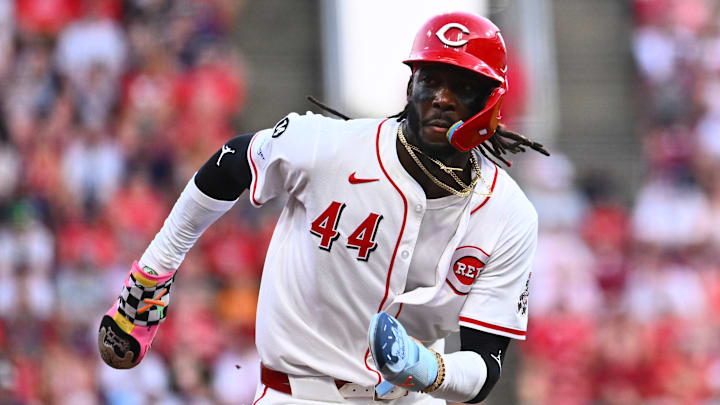For all the power and athleticism Elly De La Cruz brings to the Cincinnati Reds lineup — there’s been a growing concern: his defense. Despite having the kind of tools that scouts drool over, De La Cruz's glove work at shortstop in 2025 has become impossible to ignore. And the numbers paint the picture.
He’s posted a -7 Outs Above Average (OAA) and -3 Defensive Runs Saved (DRS) this season, paired with 12 errors through late June. In other words, he’s cost the Reds seven outs and three runs defensively compared to an average shortstop — while committing a dozen errors in the process. The numbers are no longer suggesting growing pains. They raise legitimate questions about whether De La Cruz is suited for the most demanding infield position.
OAA, a Statcast metric, measures how many outs a fielder makes above or below league average. It factors in range, direction, and difficulty. De La Cruz's -7 mark means he has failed to convert seven plays that an average shortstop would have made. That could stem from poor reads, bad angles, or over-aggressiveness — all symptoms of someone still learning how to harness his athleticism into consistent, polished defense.
DRS, meanwhile, gives us the impact in runs. A -3 mark there means he’s cost the Reds three runs with his glove — a measurable dent in team performance.
The Reds may have no choice but to move Elly De La Cruz off shortstop
There’s been plenty of chatter among Reds fans and analysts about whether De La Cruz should stay at shortstop long-term. Increasingly, the data suggests the answer may be no. A move to the outfield, while it sounds dramatic, might be the path toward unlocking his full potential — and stabilizing the Reds’ defensive alignment.
It starts with his athletic profile, which might actually play better on the grass. De La Cruz has top-end sprint speed, incredible closing ability, and one of the strongest arms in the game. In the outfield — particularly in right or center — that profile could translate into elite defensive value. He’d have more space to operate, and fewer of the fast-twitch reads and footwork that have exposed him in the infield.
Beyond the raw tools, moving him to the outfield would also cut down his errors. Missed plays in the infield often mean base runners. In the outfield, there's more margin for error, and more plays depend simply on speed and arm strength — two of his strongest tools. That positional shift could help him become at least an average, if not better, defender over time.
The move would also create valuable infield flexibility. With Matt McLain, Noelvi Marte, and several infield prospects in the system, the Reds are rich in natural and fundamentally sound shortstop options.
There’s also a matter of preservation. Shortstop is one of the most physically taxing positions in baseball — filled with awkward throws, diving stops, and constant wear and tear. De La Cruz is a franchise-caliber talent, and keeping him healthy long-term might be easier with a transition to the outfield.
And finally, there’s an argument to be made that less defensive pressure might help his bat. De La Cruz already has a high offensive ceiling, but reducing the mental toll that comes with playing shortstop every night could allow him to lock in more consistently at the plate. Some players thrive when freed from the constant mental requirements to play the infield's most cerebral position.
In short, the numbers don’t lie. The Reds gave De La Cruz every opportunity to grow into the shortstop role, and the intention made sense. But the results — highlighted by -7 OAA, -3 DRS, and 12 errors — suggest that a new defensive home might be necessary.
